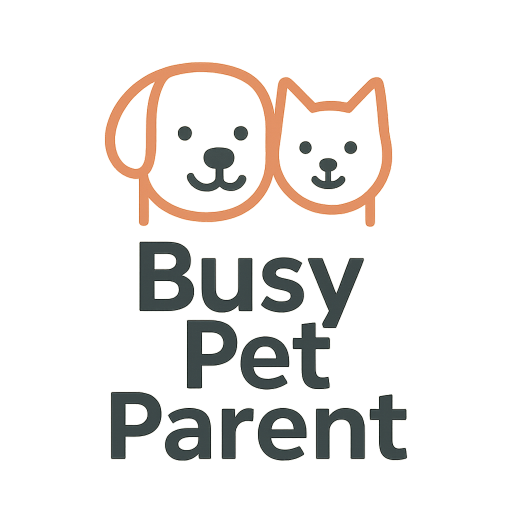
7 Simple Ways to Save Money on Pet Food Without Compromising Quality
Between rising grocery prices and inflation creeping into every aisle, it’s no surprise that pet parents are looking for ways to trim costs—especially when it comes to feeding their furry companions. But cutting back on pet food expenses doesn’t have to mean switching to low-quality brands or risking your dog or cat’s health. There are smart, sustainable ways to save money on pet food while still offering nutritious meals. Here are 7 proven strategies every budget-conscious pet owner should know.
1. Buy in Bulk (But Only If It Makes Sense)
One of the simplest ways to save money on pet food is to purchase larger bags or multi-packs. Bulk buying often reduces the price per pound and cuts down on packaging waste. However, be mindful of your pet’s consumption rate and the product’s shelf life—especially with natural or preservative-free options that spoil faster. Store excess kibble in airtight containers to maintain freshness and prevent waste.
2. Use Autoship Discounts from Online Retailers
Many online retailers like Chewy and Petco offer generous discounts for setting up recurring deliveries. These autoship discounts often range from 5–15% and can be canceled or modified anytime. It’s an easy, automated way to save money—plus you won’t run out of food unexpectedly.
3. Compare Price per Ounce, Not Just the Sticker Price
That $35 bag might seem cheaper—until you realize it only contains half as much food as the $55 option. Always check the price per ounce (or per pound) on pet food packaging or online listings. Comparing true unit prices helps avoid being misled by branding, flashy labels, or deceptive discounts.
4. Sign Up for Loyalty Rewards and Coupons
Pet stores often reward frequent buyers with cashback, exclusive discounts, or even a free bag after a certain number of purchases. Signing up for email newsletters, downloading store apps, or joining rewards programs can unlock valuable savings. Watch for seasonal sales or manufacturer coupons as well—they can be stacked with store offers for deeper discounts.
5. Supplement with Healthy, Affordable Add-Ins
If you’re feeding a high-end kibble or canned food, stretching it with vet-approved add-ins can help reduce overall costs. Think cooked sweet potato, carrots, green beans, eggs, or plain rice. These additions are healthy and inexpensive when used in moderation. Just make sure not to exceed your pet’s calorie needs or disrupt their digestive system with sudden changes.
6. Store Food Properly to Avoid Spoilage
Improper storage can cause mold, pests, and wasted money. Always reseal kibble bags tightly or transfer food into airtight containers stored in a cool, dry location. Avoid leaving canned food open for more than a few hours, and refrigerate any unused wet portions. A little food storage awareness goes a long way in preserving freshness—and your budget.
7. Don’t Overfeed—Follow Serving Guidelines
Overfeeding doesn’t just harm your pet’s health—it wastes food and money. Take the time to read feeding guidelines based on your pet’s weight and age, and use a proper measuring cup. If you're unsure, ask your vet for advice on portion sizes. Controlled feeding not only helps your budget but also keeps your pet at a healthy weight.
Feeding your pet well doesn’t have to drain your wallet. With smart shopping habits, proper storage, and a little creativity, you can reduce pet food costs without compromising nutrition or quality. In fact, many budget-friendly habits—like portion control and smart storage—actually benefit your pet’s health too. Want to understand where all your pet expenses go? Check out this helpful overview on estimated annual costs, or explore these veterinarian-recommended savings tips.
Frequently Asked Questions
Is it safe to feed homemade food to my dog or cat?
It can be, but only with guidance from your vet or a pet nutritionist. Homemade diets need to be balanced and may require supplements to meet your pet’s needs.
Do discount pet foods provide the same nutrition?
Not always. Cheaper foods may contain fillers, byproducts, or lower protein levels. Look for affordable options that meet AAFCO standards and contain whole ingredients.
What’s the best way to stretch expensive canned food?
Mix it with a portion of dry food or vet-approved add-ins like plain rice, cooked veggies, or low-sodium broth. Just monitor calories and consistency.
Are online subscriptions really cheaper?
Yes, autoship discounts from retailers like Chewy often save 5–15% per order. They also reduce trips to the store and help you stay stocked.

Join the Busy Pet Parent Newsletter!
Get easy routines, time-saving tips, and the latest gear reviews—delivered straight to your inbox.
Perfect for busy pet owners, apartment dwellers, and anyone who wants a happy, healthy companion (without the stress).
Exclusive guides & checklists
Product recommendations & deals
No spam—unsubscribe anytime!




